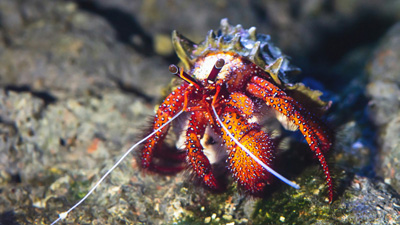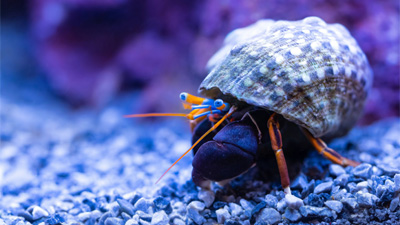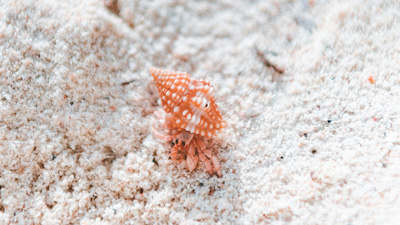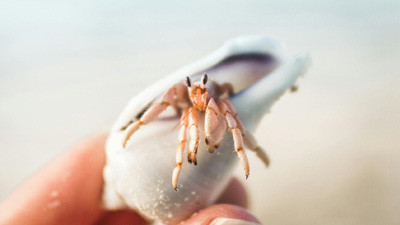How to Quickly Tell the Gender of a Hermit Crab?

Photo by Oleksandr Sushko on Unsplash
Hermit crabs, with their fascinating behaviors and unique characteristics, make captivating pets for enthusiasts and marine enthusiasts alike. One compelling aspect of these creatures is understanding the differences between male and female hermit crabs. Determining the gender of hermit crabs can be challenging at first, but with careful observation of their physical attributes and behaviors, it can become a straightforward task.
In this article, we will delve into the numerous factors that can help quickly identify the gender of a hermit crab. From analyzing physical characteristics to observing behavioral traits, we will provide you with a comprehensive guide to distinguishing between male and female hermit crabs.
Hermit Crab Anatomy and Biology
Before delving into the differences between male and female hermit crabs, it is essential to understand their basic anatomy and biology. Hermit crabs belong to the superfamily Paguroidea and are characterized by their jointed exoskeleton, ten limbs, and their habit of residing in discarded shells for protection. These fascinating crustaceans are omnivorous scavengers, feeding on a variety of organic matter found in their coastal habitats. Reproduction in hermit crabs typically involves mating, internal fertilization, and the release of eggs into the water, where they hatch into larvae before developing into adult crabs.
1. Physical Differences
While male and female hermit crabs may appear similar at first glance, several physical differences can help differentiate between the sexes. Among the key physical characteristics to consider are:
Size and Shape:
In general, male hermit crabs tend to be slightly larger than their female counterparts. The size difference is more noticeable in species like the Ecuadorian hermit crab (Coenobita compressus), where males can grow up to 0.5 inches larger than females. Additionally, male hermit crabs often have a more elongated and slender body shape, while females have a rounder and broader shape.
Coloration:
Coloration can also be used as a distinguishing factor between male and female hermit crabs, although it varies among species. In some species, males may have more vibrant and intense colors or patterns on their exoskeleton compared to females. However, it is important to note that coloration alone may not always be a reliable indicator of gender.
Claws:
The size and shape of the claws can provide valuable insights into the gender of a hermit crab. Male hermit crabs generally have larger, more robust claws compared to females. These claws serve various purposes, such as defense, competition, and attracting mates. The larger and more asymmetric claws of males are adaptations that aid in securing a mate and defending their territory.
Leg Hairiness:
One of the most noticeable differences is the presence of hair on the legs of male hermit crabs, whereas female hermit crabs typically have smooth, hairless legs. This distinction can be observed by examining the legs of the crab closely, particularly under magnification if necessary.
Abdominal Appendages:
One of the most distinguishing features between male and female hermit crabs is the presence of abdominal appendages. Female hermit crabs have three appendages called gonopods on the left side of their abdomens, which are absent in males. These appendages are involved in reproduction and egg-carrying, providing a clear visual cue for identifying female individuals.
2. Sexual Organs
In addition to external physical characteristics, internal sexual organs can provide valuable insights into the gender of a hermit crab:
Male Sexual Organs:
Male hermit crabs possess a penis located beneath their fifth pair of legs. This organ is used for mating and is often larger in size, particularly during the breeding season when males are actively seeking mates.
Female Sexual Organs:
Female hermit crabs have gonopores, tiny openings located above the third pair of legs. These openings serve as the entry point for sperm during mating and are crucial for fertilization and egg-laying.
3. Behavioral Differences
While behavioral differences between male and female hermit crabs may not always be reliable indicators of gender, they can provide additional clues:
Mating Behavior:
During the breeding season, male hermit crabs display more aggressive and assertive mating behaviors. They actively pursue females, often engaging in mating chases where the male follows a receptive female to secure her as a mate. These chases can be observed in both natural habitats and captivity. Male hermit crabs may also use their larger claws to compete with other males for access to females. Females, on the other hand, display more passive behaviors during mating, often selecting the most suitable male among their suitors.
Exploratory Behavior:
Female hermit crabs are often more explorative and adventurous than males, actively seeking out new terrains and habitats. This behavior may be related to their role in reproduction and egg-laying, as females need to find suitable locations for incubating their eggs.
Challenges in Gender Determination
Determining the gender of hermit crabs can be challenging in some cases. Here are a few factors that can make gender identification more difficult:
Molting
Hermit crabs undergo molting, a process where they shed their exoskeletons as they grow. During and shortly after molting, their external characteristics, including claw size and shape, can change. Therefore, identifying their gender during this phase requires careful observation and potentially waiting until their exoskeleton hardens.
Juvenile Hermit Crabs
Gender identification of juvenile hermit crabs can be particularly challenging, as their external characteristics may not be fully developed. It is often necessary to wait until they reach maturity when more reliable gender-specific traits become apparent.
Individual Variability
Individual variability within a species can make it challenging to determine the gender of hermit crabs based solely on physical characteristics. Some hermit crabs may not strictly conform to the typical characteristics associated with their gender, emphasizing the importance of considering multiple traits and behaviors for a more accurate assessment.
Conclusion
Determining the gender of hermit crabs is an exciting endeavor for enthusiasts and pet owners alike. The differences between male and female hermit crabs extend beyond mere physical appearance, encompassing distinct behaviors, reproductive adaptations, and anatomical features. By carefully observing physical characteristics and behaviors, one can quickly identify the gender of these remarkable creatures. It is important to approach the process with patience and consider multiple traits for a more accurate assessment.
You May Also Like
 Other PetsHow Long Does a Hermit Crab Live as a Pet?
Other PetsHow Long Does a Hermit Crab Live as a Pet? Other PetsCan Hermit Crabs Live in Tap Water?
Other PetsCan Hermit Crabs Live in Tap Water? Other Pets50+ Hilarious Hermit Crab Names That'll Make You Crack Up!
Other Pets50+ Hilarious Hermit Crab Names That'll Make You Crack Up! Other Pets10 Favorite Snacks for Hermit Crabs Healthy
Other Pets10 Favorite Snacks for Hermit Crabs Healthy Other PetsWhat Can Hermit Crabs Not Eat? 13 Food Categories to Avoid
Other PetsWhat Can Hermit Crabs Not Eat? 13 Food Categories to Avoid Other PetsHow Long Does It Take Hermit Crabs to Molt?
Other PetsHow Long Does It Take Hermit Crabs to Molt?